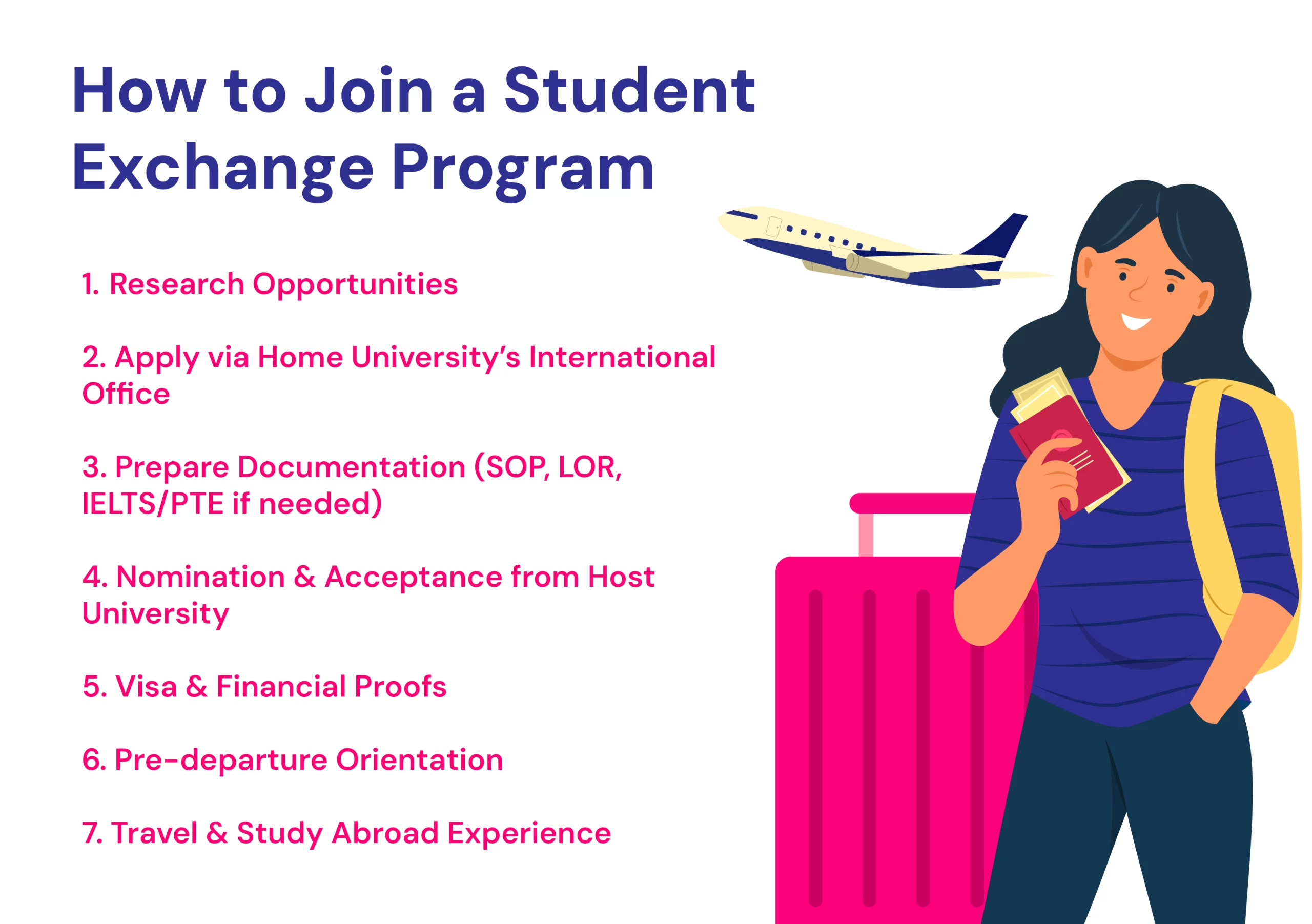Best Courses After 12th for Abroad Study: Your Ultimate Guide
Student Exchange Program: A Transformative Step in Your Academic Journey

Why Students Choose Exchange Programs Today
Instead of the overused “globalised world” narrative, let’s focus on the real reasons. Students don’t just join a Student Exchange Program because it looks good on paper – they do it because it transforms their academic and personal trajectory. Employers are increasingly interested in graduates who can demonstrate adaptability, cultural fluency, and problem-solving skills in international environments. Universities, too, are prioritising partnerships with global institutions, giving students a chance to spend a semester or year abroad without disrupting their degree progress.
For many, this isn’t just about Studying in Another Country – it’s about experiencing a new way of life, gaining independence, and building a global network of peers. And with structured exchange programs, students often pay their home university’s tuition fees while accessing world-class learning abroad – making it a cost-effective alternative to a full-time international degree as Student Exchange Program.
Key Benefits of a Student Exchange Program
- Enhanced Academic Exposure
- Cultural Immersion
- Global Employability
- Financially Practical
- Personal Growth
Studying Abroad offers access to teaching methodologies, research facilities, and elective subjects not available in the home institution. Engineering students may access labs with advanced AI infrastructure; business students can join real-world simulation projects with multinational corporations.
Beyond textbooks, the value lies in immersion. Living in Spain, Germany, or South Korea exposes you to local traditions, languages, and mindsets – preparing you to work in multicultural teams effortlessly.
Employers see exchange students as resourceful and adaptable. Internships, part-time work opportunities, and networking events during the program add weight to CVs and LinkedIn profiles.
Unlike a full-time international degree, most exchange students continue paying home tuition. This reduces costs significantly while still granting the exposure of studying abroad.
From navigating metro systems in Tokyo to managing daily expenses in Paris, the independence and resilience built during an exchange create life-ready individuals.
Eligibility & Requirements
Not every student qualifies for an exchange, and universities maintain rigorous standards:
- Academic Standing – A good GPA (generally above 3.0 or 60%+) is essential.
- Language Proficiency – IELTS, TOEFL, or PTE may be required depending on the host country.
- Recommendation Letters – Professors often provide academic references to strengthen applications.
- Statement of Purpose – Universities want to see motivation, clarity of academic goals, and cultural curiosity.
- Visa & Financial Proofs – Students must show proof of funds to cover living expenses, insurance, and travel.
How to Join a Student Exchange Program

Top Destinations for Student Exchange
- USA & Canada – Research-intensive programs, flexible electives, and internship-driven structures.
- UK & Ireland – World-Class Universities and rich cultural history with English-speaking environments.
- Germany & France – STEM-driven programs, tuition-friendly structures, and global industry exposure.
- Australia & New Zealand – Applied learning focus, multicultural campuses, and employability edge.
- Asia (Japan, South Korea, Singapore) – Tech-forward learning, strong innovation ecosystems, and cultural diversity.
Duration and Structure
Exchange programs usually last one semester (4–6 months) or one academic year (8–12 months). Credits earned abroad transfer back home, ensuring no academic gap. Some programs also include research projects, internships, or language courses, which further add to their value.
Financial Aspects
While tuition is covered at the home university, students should budget for:
- Living Costs – Accommodation, food, transport (varies widely across countries).
- Insurance – Mandatory in most destinations.
- Visa & Travel – Application fees and flights.
- Miscellaneous – Books, activities, and leisure.
Scholarships and exchange-specific grants are available through both home and host universities. Students should explore funding opportunities early.
Challenges and How to Overcome Them
- Culture Shock – Engage with student communities and local clubs to integrate.
- Language Barriers – Learn basic conversational phrases beforehand.
- Academic Differences – Adapt to new teaching styles by seeking peer or faculty support.
- Homesickness – Regular virtual check-ins with family while actively engaging with the host community can help.
Each of these challenges, once overcome, becomes a point of growth and maturity.
Value Beyond the Classroom
A Student Exchange Program isn’t just an academic exercise. Students come back with:
- Global Perspective – Ability to analyse issues from diverse cultural viewpoints.
- Networking Advantage – Lifelong friends and professional contacts from across the world.
- Career Edge – Recruiters actively prefer candidates with proven adaptability.
- Confidence & Independence – Learning to thrive outside comfort zones.
How MetaApply IE Makes the Process Seamless
At MetaApply IE, we understand that applying for an exchange can feel overwhelming. From course selection, eligibility checks, financial aid guidance, and Visa Assistance to Career Counselling and Psychometric Tests, our expert counsellors streamline the process.
If you feel that studying abroad could make a difference in your life, or if pursuing education internationally aligns with your goals, our team ensures your entire journey is handled smoothly. We don’t just help with documentation – we prepare you for interviews, financial planning, and even cultural adjustments.
Whether it’s a short-term exchange or a long-term degree, our career counselling, Test Preparation, and personalised mentoring ensure you make informed decisions. With MetaApply IE, you’re not just applying for a Student Exchange Program – you’re preparing for a future where you belong to the global academic and professional community.
Note: A student exchange program is subject to seat availability at a particular university or destination. Students are therefore advised to check the official websites of the respective country or university for the most accurate and up-to-date information.
Frequently Asked Questions
A Student Exchange Program allows students to study at a partner university abroad for a semester or academic year while continuing to pay tuition fees at their home institution. Credits earned during the exchange are usually transferable, ensuring no academic delay.
Eligibility for a Student Exchange Program generally includes a good academic record, English language proficiency (IELTS, TOEFL, or PTE scores), recommendation letters, and a strong statement of purpose. Some universities may also require proof of funds and health insurance.
The cost of a Student Exchange Program is usually lower than a full-time international degree since students pay tuition at their home university. However, students should budget for living expenses, accommodation, travel, visa fees, and insurance in the host country. Scholarships and grants are often available to reduce costs.


















































